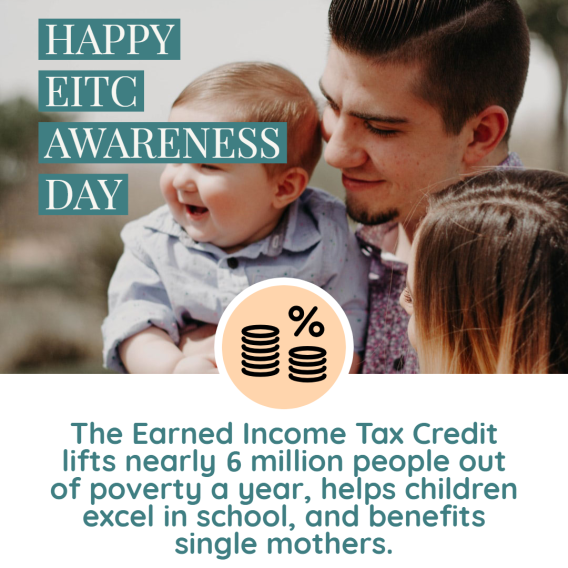By Jayanthi Ragubathi, 2017 Get It Back Campaign Intern

Many low-income families and individuals, including those who claim the Earned Income Tax Credit (EITC), lack access to bank accounts and are forced to pay for basic financial services. According to the 2015 FDIC survey, 9 million families do not have a bank account (unbanked), and an additional 24 million households have bank accounts, but do not fully participate in the mainstream financial system (underbanked).
Workers without bank accounts must use cash or alternative financial services (such as check cashing or money orders) for most of their finances. These alternative services are expensive: underbanked and unbanked households spend 10 percent of their income on financial fees alone.
Lack of bank access also limits opportunities for asset-building. To buy a home, build a business, or pay for college tuition, families need access to trustworthy loans and credit. Without a bank, they frequently resort to taking out high-cost loans from non-traditional lenders. These alternatives, which include pawn shops, check cashing operations, and payday loans, are often predatory. In comparison, banks are supported by the government — providing a level of security for customers — and help clients build credit.
Most people are unbanked or underbanked because they lack access to financial resources. Unfortunately, many low-income people face barriers to entering the financial mainstream. Some common challenges are having insufficient funds to open and maintain an account, distrusting banks, and having negative prior banking experiences.
Here are four ways your organization or tax site can help address these barriers.
- Connect clients to financial education and counseling. Many people may not know about available services and products beyond bank accounts. For example, individual development accounts (IDAs) and prepaid cards can help meet the needs of some workers. IDAs offer matched savings to encourage asset-building. Prepaid cards allow customers to receive direct deposits and go cashless.
- Do your research. Make sure you understand the pros and cons of different products. For example, IDAs aren’t available in all communities and the design and fees of some prepaid cards can be harmful for clients. Second Chance accounts may attract clients who have a negative ChexSystems report and want to rebuild their banking history. However, these accounts frequently come with restrictions like higher fees or no debit card. Share the benefits and disadvantages of different products with clients and how to evaluate the options so they can make informed choices.
- Partner with local banks or credit unions. Banks are subject to ratings based on their community engagement, particularly in underserved neighborhoods, under the Community Reinvestment Act (CRA). As part of their CRA commitment, some banks work with VITA sites to offer financial coaching or help clients open free or low-cost bank accounts.
- Tailor your messaging. Recognize the diversity within the unbanked and underbanked population. For example, some clients may already save through informal lending groups. Others may apply budgeting basics because of their limited income. Instead of focusing on financial literacy (which implies a starting place of illiteracy), highlight clients’ strengths and frame the banking opportunity around expanding financial access to products and services and increasing one’s ability to build wealth.
Lack of access to bank accounts and the high cost of alternative financial services undermines the financial stability of low-income families, leaving them vulnerable to money emergencies and limiting their ability to build assets. Encouraging and supporting safe banking options leads to better economic opportunities for all.






